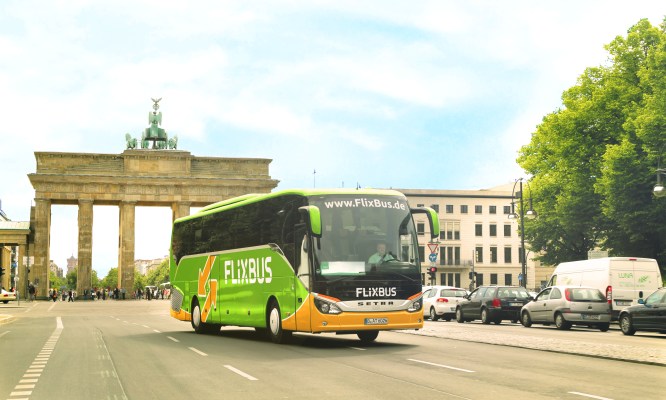Back in July it emerged that FlixMobility — the company behind the network of ubiquitous green FlixBus coaches that crisscross Europe and parts of the U.S. — had raised about €500 million in the largest-ever round of funding for a German tech company. That turned out not to be the full story. Today, the company is announcing that the round has now been extended substantially, according to founder and CEO Jochen Engert, with contributions from a new set of investors: Baillie Gifford, Luxor Capital Group and Odyssey 44, with additional investment provided through funds managed by BlackRock.
Engert said FlixMobility will be using the money to “move on from a business perspective” (I don’t think he meant it as a pun, but it’s a good one), and that means growth in a number of ways. They include expanding into new markets in South America and Asia and further into the U.S.; bringing trains onto its network by way of FlixTrain; launching a new group-focused service, FlixBus Charter; and, by next year, starting up a long-distance ridesharing brand, FlixCar. It’s also been working on a smaller “pilot” project, Flix2Fly, to consider how to bring some air routes into the mix, as well.
The aim, he said in an interview, is to build a wider “transportation marketplace for customers looking for affordable mobility.”
Engert would not specify the exact size of the round, but he confirmed that it was at the same valuation as the first close of the Series F (which was just over $2 billion), and that the extra funding was “not double” the earlier amount, “but substantial.” (The company has always kept quiet about the exact amount it has raised, and from whom, in part to focus on the business, but also in part to keep competition guessing. We’re still trying to find out the actual number.)
Considering the investors in the round, it means it’s likely it has added hundreds of millions more to the mix alongside the €500 million from TCV, Permira and HV Holtzbrinck Ventures. Previous investors in the company have included Silver Lake and General Atlantic.
The company, similar to other on-demand transportation giants like Uber or RedBus in India, does not own a large fleet of vehicles, but works with individuals and companies that own these that want to tap into its logistics platform, which helps build efficient long-distance (intercity) routes — its shortest connection is 50km, most are beyond 100km, and the “sweet spot” Engert said is 200km — and source passengers who collectively want to travel on them.
Typically, Engert said these companies do not go all-in on the Flix platform, but they contribute a proportion of their fleets, which in turn get rebranded with Flix’s distinctive green logo. The idea — similar to a key building block for intracity car services — is to give the operators of those vehicles a steady, predicable stream of usage and business, which offsets the fact that those operators may make smaller margins on those routes because they are not operating them directly. It has also acquired other companies operating on a similar business model to grow its network.
In 2018, some 45 million people used FlixBus and FlixTrain, along 350,000 daily connections to more than 2,000 destinations, the company says. Its network currently spans 29 countries and 300 independent bus and train partners, and it attributes some 10,000 jobs in the industry to its business.
In doing so, FlixBus (and latterly FlixMobility) have tapped into an interesting segment of the world of transportation. While there has been a lot of focus on the next generation of transportation machines — whether that is scooters, or self-driving cars, or electric vehicles, or planes that do not burn as much fuel — Flix is instead working on ways of applying technology to bring some of the dinosaurs of the current (old) generation of vehicles into the 21st century. That has given it an interesting status of working in markets that have typically had less competition, or at least attention, leaving open water for companies like Flix.
That may not be the case longer term. Today companies like Uber are focusing on the urban mobility question, although as it grows to cover all modes of urban transport, there is a clear opportunity for it to extend to the next leg of the journey, too.
